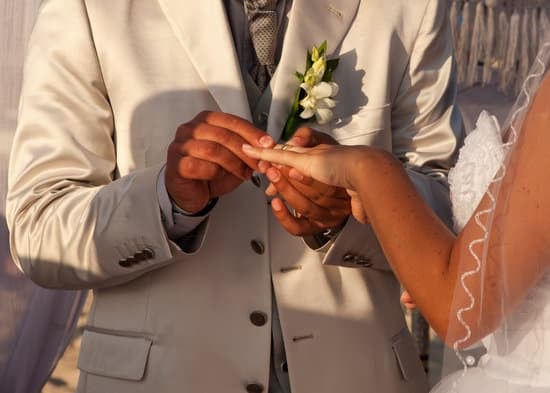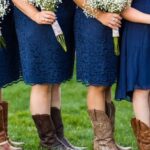Your wedding day is a momentous occasion that you’ll want to remember for the rest of your life. Capturing the perfect wedding pictures is essential in preserving those precious memories. From the pre-wedding preparations to the ceremony and reception, every moment is worth capturing.
One important question that often arises is: how much time for wedding pictures? In this article, we will explore the significance of allocating time for different aspects of wedding photography and provide tips for ensuring that you get the perfect shots on your special day.
Setting the scene for your wedding pictures starts with choosing the right location and time of day for the photoshoot. Whether you prefer an outdoor garden, a rustic barn, or an elegant ballroom, selecting the perfect backdrop is crucial. The lighting during different times of day can also greatly affect the outcome of your photos, so it’s important to coordinate with your photographer to ensure that you take advantage of the best lighting conditions.
Once you’ve set the scene, it’s essential to allocate time for various stages of the photoshoot. This includes capturing moments with your bridal party, groomsmen, individual portraits, family formals, candid moments throughout the day, reception photography, and sunset sessions.
Each stage requires careful planning and coordination to ensure that you have enough time to capture every aspect beautifully. We will delve into each of these stages in detail and provide tips for maximizing time while avoiding potential challenges along the way.
Setting the Scene
When it comes to creating breathtaking wedding pictures, choosing the right location and time of day for your photoshoot is crucial. The setting and lighting can greatly impact the outcome of your photographs, so it’s important to carefully consider these factors in order to achieve stunning results.
Outdoor Locations
If you’re planning an outdoor photoshoot, consider selecting a location that holds significance for you and your partner. Whether it’s the place where you first met, a favorite park, or a charming garden, choosing a meaningful outdoor location can add an extra layer of sentimental value to your wedding pictures.
Indoor Locations
For indoor photoshoots, think about venues with ample natural light or unique architectural features. A rustic barn, an elegant ballroom, or a modern art gallery can serve as captivating backdrops for your wedding photographs. Be sure to discuss potential indoor locations with your photographer beforehand to ensure they align with your vision for the photoshoot.
Time of Day
The timing of your photoshoot can significantly affect the quality of your images. Many photographers recommend taking couple portraits during golden hour – the period shortly after sunrise or before sunset when the light is soft and warm. This magical time of day creates a romantic ambiance and produces flattering lighting that enhances complexion and overall mood in photographs.
Ultimately, whether you choose an outdoor or indoor location, and decide on early morning, afternoon, or evening for your photoshoot will depend on personal preference combined with advice from professional photographers who have experience capturing wedding moments in different settings and at various times of day.
Pre-Wedding Timeline
When it comes to capturing the perfect wedding pictures, allocating enough time for pre-wedding portraits is essential. To ensure that you have ample time for all the necessary shots, it’s important to carefully plan out your pre-wedding timeline.
Getting Ready Shots
The bride and groom getting ready are some of the most special moments to capture on camera. While the exact time needed will vary depending on individual preferences, hair and makeup schedules, and logistics, it’s generally a good idea to allocate around 1-2 hours for getting ready shots. This will allow your photographer to capture not only the intricate details of your attire and accessories but also the candid, emotional moments as you prepare for the big day.
Bridal Party and Groomsmen Portraits
Once everyone is dressed and ready, it’s time to gather the bridal party and groomsmen for group portraits. Depending on the size of your group, formal group shots can take anywhere from 30 minutes to an hour. It’s important to communicate with your photographer beforehand about any specific group combinations or poses you have in mind to ensure that everything runs smoothly on the day.
Individual Portraits
Lastly, don’t forget to allocate some time for individual portraits of both the bride and groom. This is a great opportunity for your photographer to capture stunning shots of each of you before the ceremony begins. Additionally, taking individual portraits separately can help calm nerves and give you a moment alone before saying “I do.” Plan for around 15-30 minutes per person for these individual shoots.
By carefully planning out your pre-wedding timeline and ensuring that you allocate enough time for bridal party, groomsmen, and individual portraits, you can ensure that you get all the shots you desire without feeling rushed or stressed on your big day. Communication with your photographer is key in this process as they can provide valuable insights into how much time is needed based on their experience and expertise in wedding photography.
Family Formals
When it comes to capturing the perfect wedding pictures, family formals play a crucial role in documenting your special day. These timeless photos will be cherished for years to come, so it’s important to streamline the process and ensure that everyone is photographed. From grandparents to siblings and nieces, family formals are an essential part of any wedding album.
To make the most of your time for family formals, communication with your photographer is key. Before the big day, provide them with a list of specific groupings you want to include in the formal portraits. This will help the photographer organize the session efficiently and ensure that no one is left out. By communicating your preferences and expectations beforehand, you can optimize the time allocated for family formals.
Another tip for streamlining the process of family formals is to designate a family member or close friend who knows both sides of the family well. This person can assist the photographer in rounding up each group for their photos, making sure that all necessary combinations are captured promptly.
With a designated helper, you can save valuable time and avoid any potential confusion during this part of the photoshoot. By following these tips and effectively managing the time for family formals, you can ensure that everyone gets their moment in front of the camera without causing unnecessary delays on your wedding day.
Candid Moments
Capturing candid moments is essential for telling the story of your wedding day in a genuine and authentic way. These unposed and spontaneous shots often become some of the most cherished images from the event, as they capture the raw emotions and genuine interactions between loved ones. To ensure that your photographer has enough time to capture these special moments, it’s important to plan out the day with some flexibility and allow for opportunities for candid photography.
Here are some tips for maximizing candid moments throughout your wedding day:
- Encourage your photographer to move freely throughout the day in order to capture spontaneous interactions between guests, the bridal party, and family members.
- Allow time within your schedule for relaxed and unscripted moments, such as during cocktail hour or before the ceremony begins.
- Consider including activities or elements in your wedding that naturally lend themselves to candid photography, such as lawn games, a photo booth, or a dance floor with lively music.
By giving your photographer the freedom to seize these authentic moments, you can expect a beautiful collection of photos that truly reflect the spirit of your wedding day.
Additionally, communicate with your photographer about any specific candid shots that you particularly want. This will help them prioritize capturing those moments while still allowing room for spontaneity.
It’s also important to discuss any potential challenges that could impact candid photography, such as harsh lighting conditions or limited access to certain areas of the venue. Being open and communicative with your photographer will help ensure that they have ample time and opportunity to capture those precious candid moments throughout the day.
Reception Photography
When it comes to wedding photography, capturing the key moments of the reception is crucial. From the first dance to the cake cutting, these are the moments that couples will want to look back on for years to come. However, timing is essential to ensure that these moments are not missed and are captured beautifully.
The first dance typically takes place shortly after the grand entrance of the newly married couple. As this is a highly anticipated moment, it’s important to allocate enough time for your photographer to get set up and capture this special moment. Typically, budgeting around 30 minutes for this portion of the evening is a good rule of thumb.
Following the first dance, the cake cutting is another important moment that should not be overlooked. Discuss with your photographer how much time they will need to set up and capture this moment effectively. About 15-20 minutes should be sufficient for this part of the reception.
In addition to these key moments, there may be other specific traditions or events that you’ll want your photographer to capture during the reception. Whether it’s a special toast, a cultural tradition, or a surprise performance, be sure to communicate these details with your photographer in advance so they can plan accordingly and allocate enough time for each significant moment.
| Reception Moment | Recommended Time Allocation |
|---|---|
| First Dance | 30 minutes |
| Cake Cutting | 15-20 minutes |
Sunset Session
- Plan Ahead: Work with your photographer to determine the specific timing for your sunset session. Keep in mind that golden hour typically occurs during the last hour before sunset, but this can vary depending on your location and time of year.
- Scout Locations: Choose a picturesque location for your sunset session, whether it’s on the grounds of your venue or at a nearby scenic spot. Consider factors such as natural backdrops, open fields, or bodies of water to enhance the beauty of the photos.
- Clothing and Styling: Coordinate your outfits to complement the warm tones of golden hour. Soft, neutral colors often work well during this time and can add to the dreamy quality of the images.
During your sunset session, communicate openly with your photographer to ensure everything runs smoothly and efficiently. By planning ahead and considering all possible scenarios, you can maximize the limited time available during golden hour to capture truly memorable and magical couple portraits that will be cherished for a lifetime.
Tips for Maximizing Time
In conclusion, capturing perfect wedding pictures requires careful planning and allocation of time for various aspects of the photoshoot. From choosing the right location and time of day for the photoshoot to ensuring that important moments are captured during the reception, there are many factors to consider. One of the key considerations is how much time should be allocated for each aspect of the wedding photography.
Scheduling and communication with your photographer are crucial elements in maximizing the time available for wedding pictures. By working closely with your photographer and having a clear timeline in place, you can ensure that enough time is allocated for each part of the photoshoot.
This includes setting aside time for family formals, individual portraits, candid moments, and golden hour sessions. Effective communication with your photographer will also help in addressing any potential challenges that may arise on the day of the wedding.
It’s important to remember that while it’s essential to have a well-planned schedule for capturing wedding pictures, allowing for spontaneity and authentic moments is equally valuable. By striking a balance between planned shots and candid photography, you can ensure that all aspects of your special day are beautifully documented.
Ultimately, by following these tips and considering the various factors involved in scheduling and communication with your photographer, couples can maximize their time for wedding pictures and create lasting memories of their big day.
Frequently Asked Questions
How Long Should Wedding Photos Take?
The length of time for wedding photos can vary depending on the couple’s preferences and the photographer’s style. Typically, it’s recommended to allocate at least 2-3 hours for formal portraits and group shots, with additional time for candid moments.
Is 2 Hours Enough for Wedding Photos?
Two hours can be enough for wedding photos if it’s well-planned and executed efficiently. During this time, it’s important to prioritize key shots like the ceremony, portraits, and some candid moments. However, more time allows for a wider variety of photos.
Is 3 Months Too Long for Wedding Photos?
Three months is not too long for wedding photos to be delivered, especially if the photographer has a busy schedule or takes extra time to edit and curate the images. It’s important to communicate with your photographer about their timeline and expectations.

I have been involved in marriages for over 20 years helping couples and singles understand more about them.





